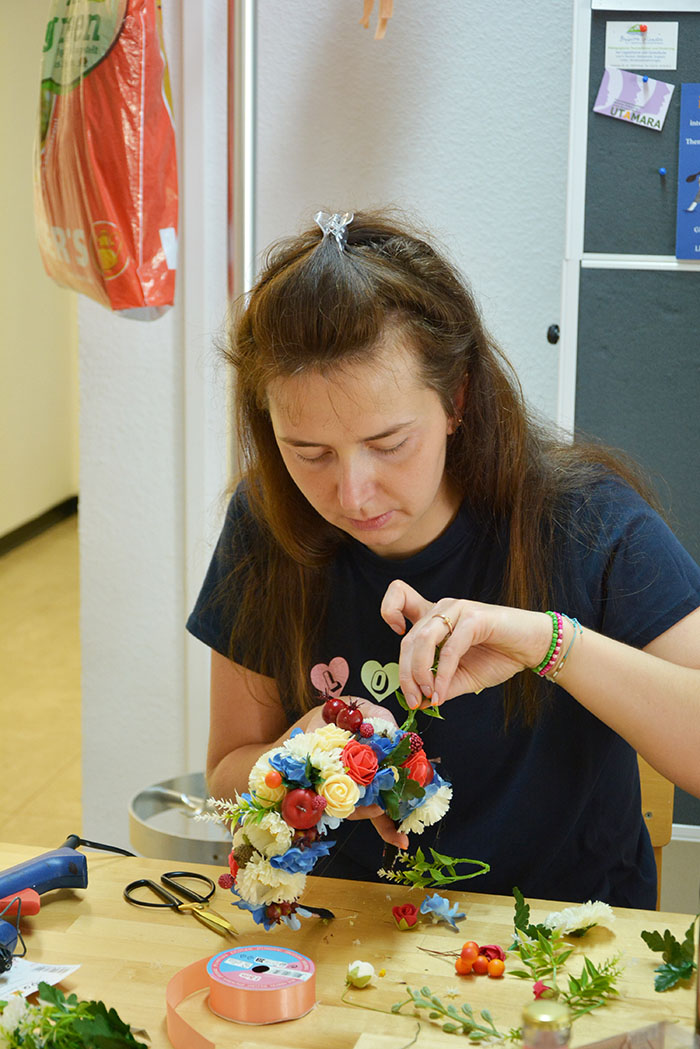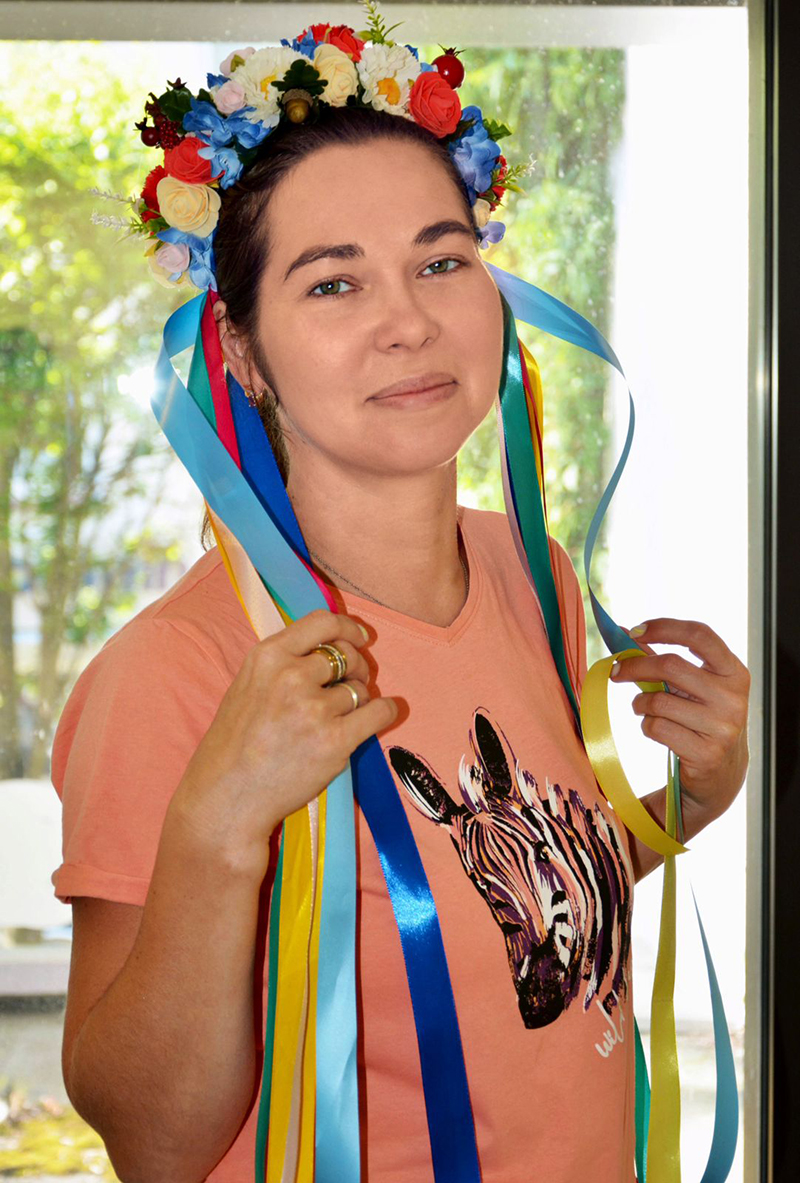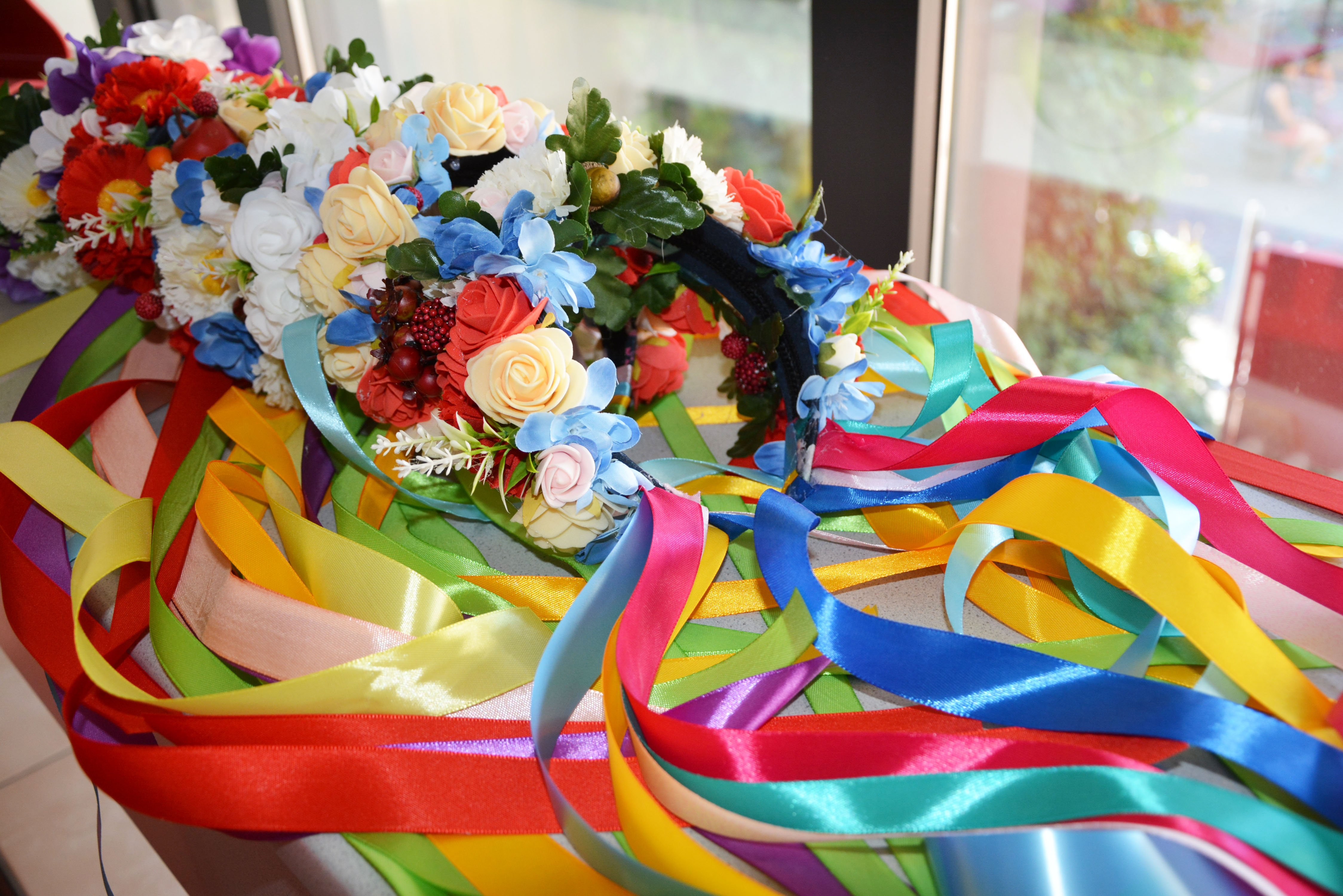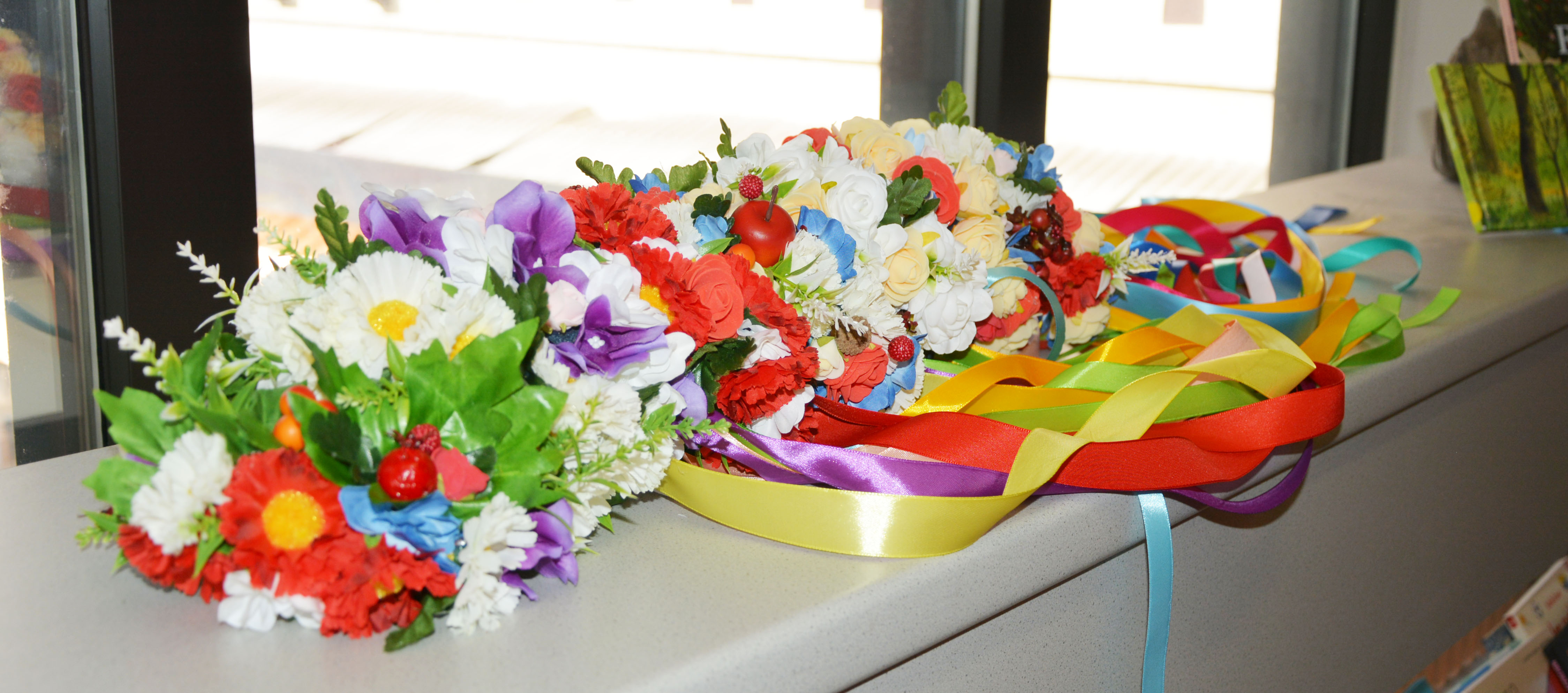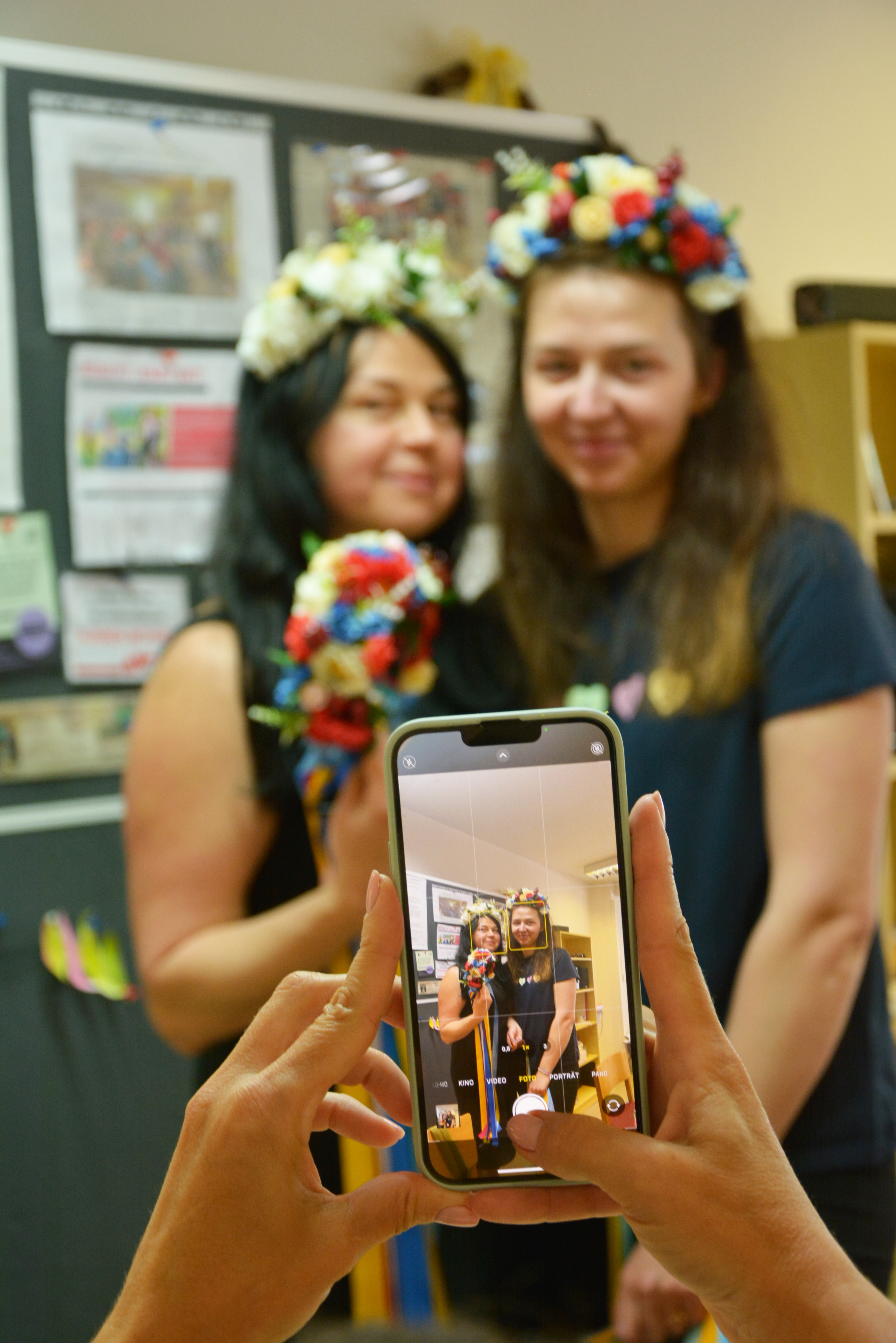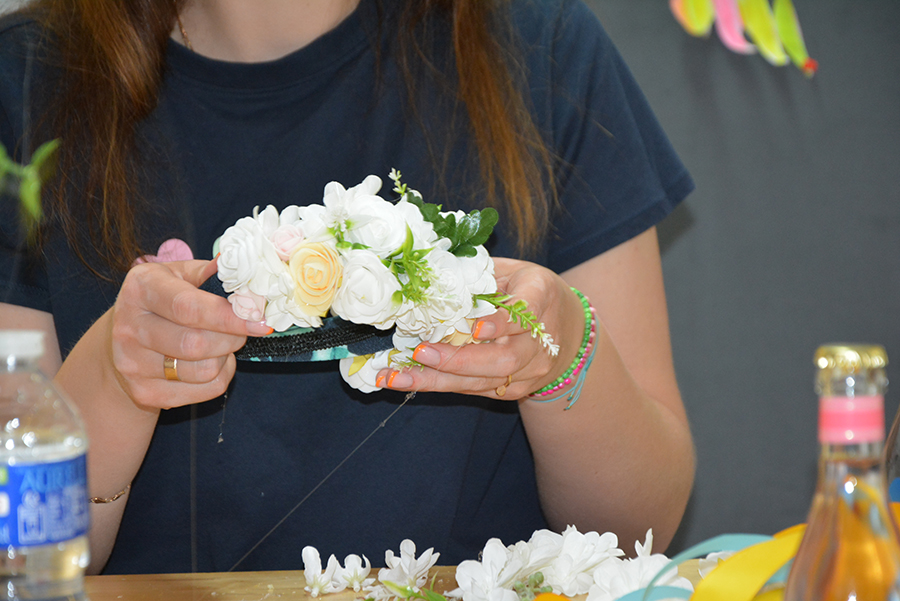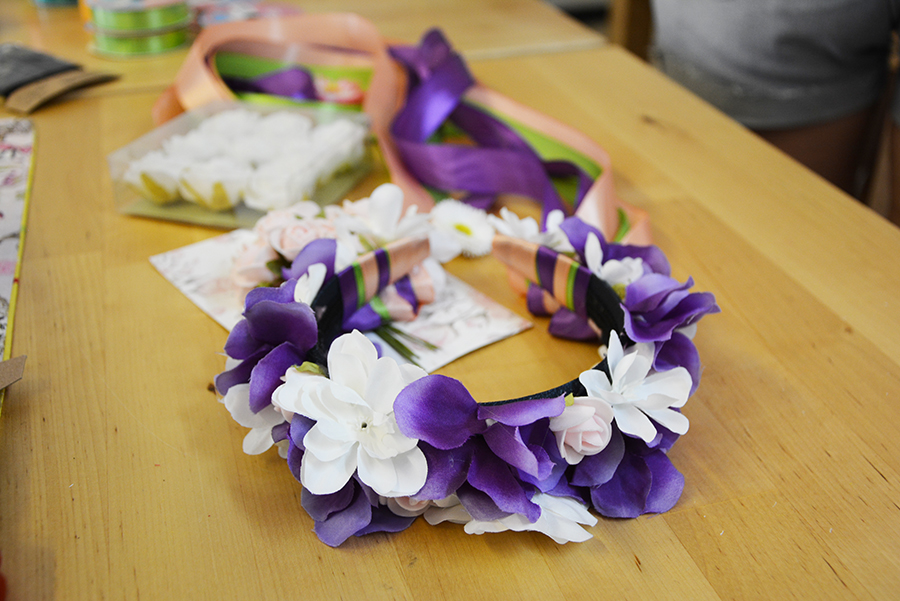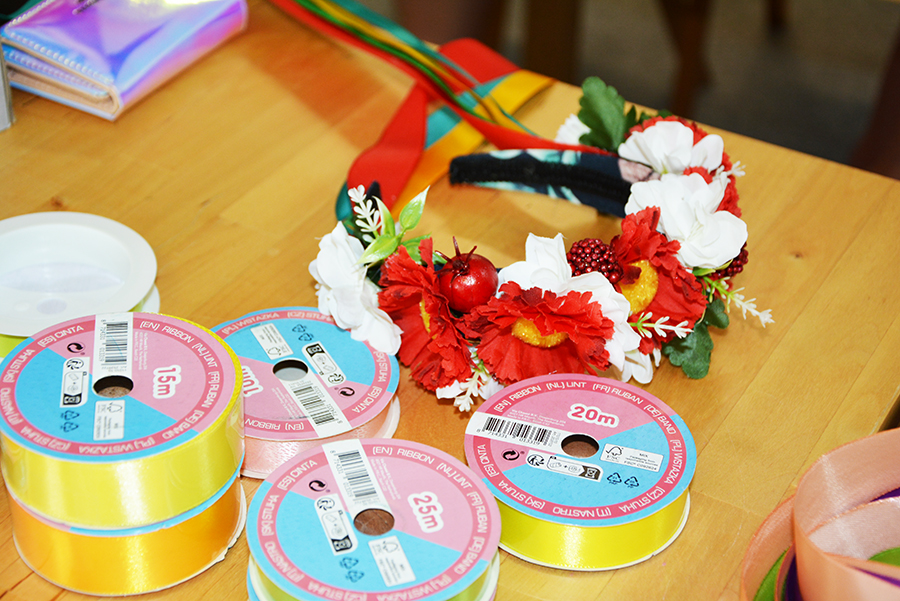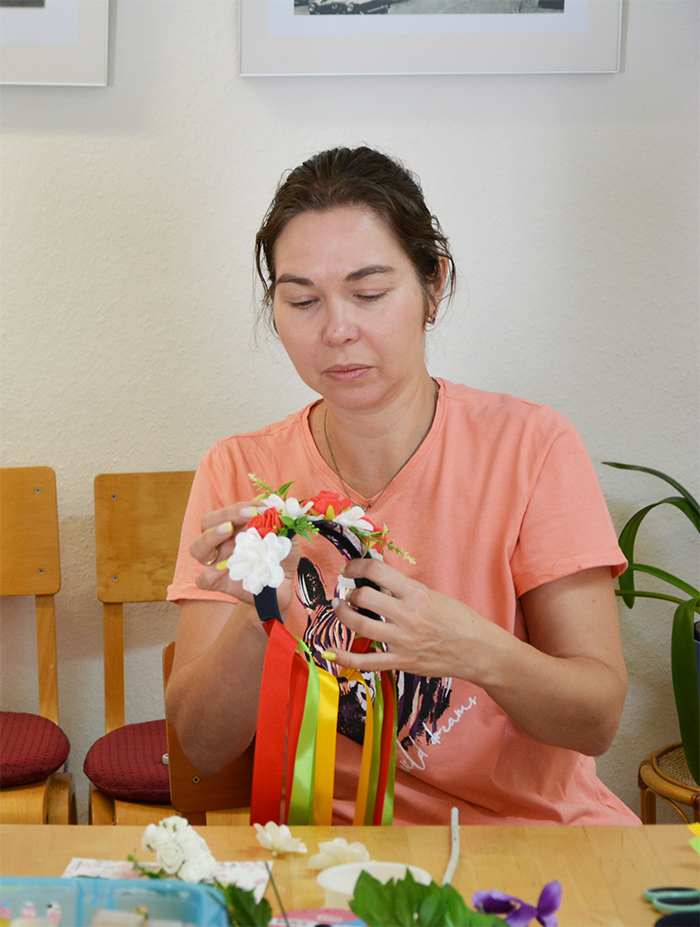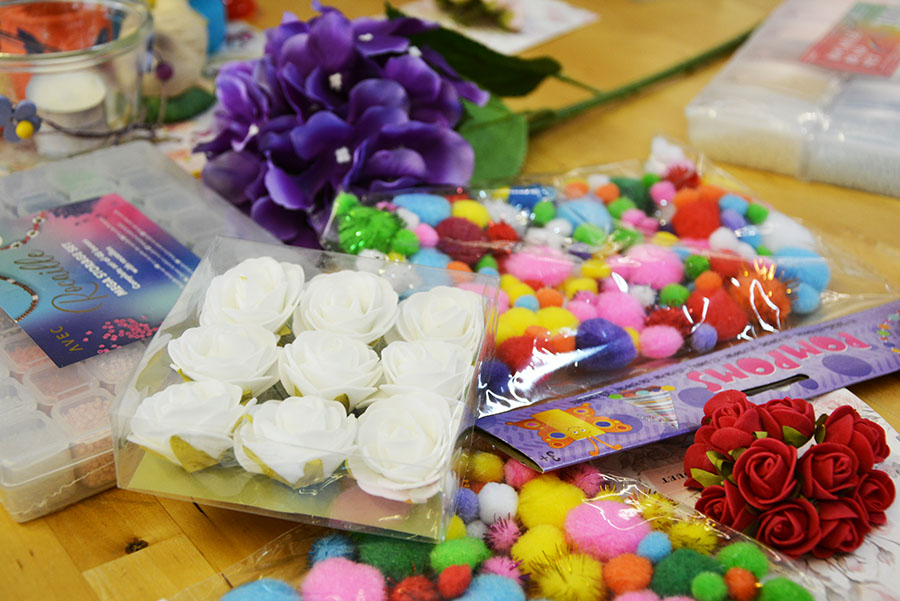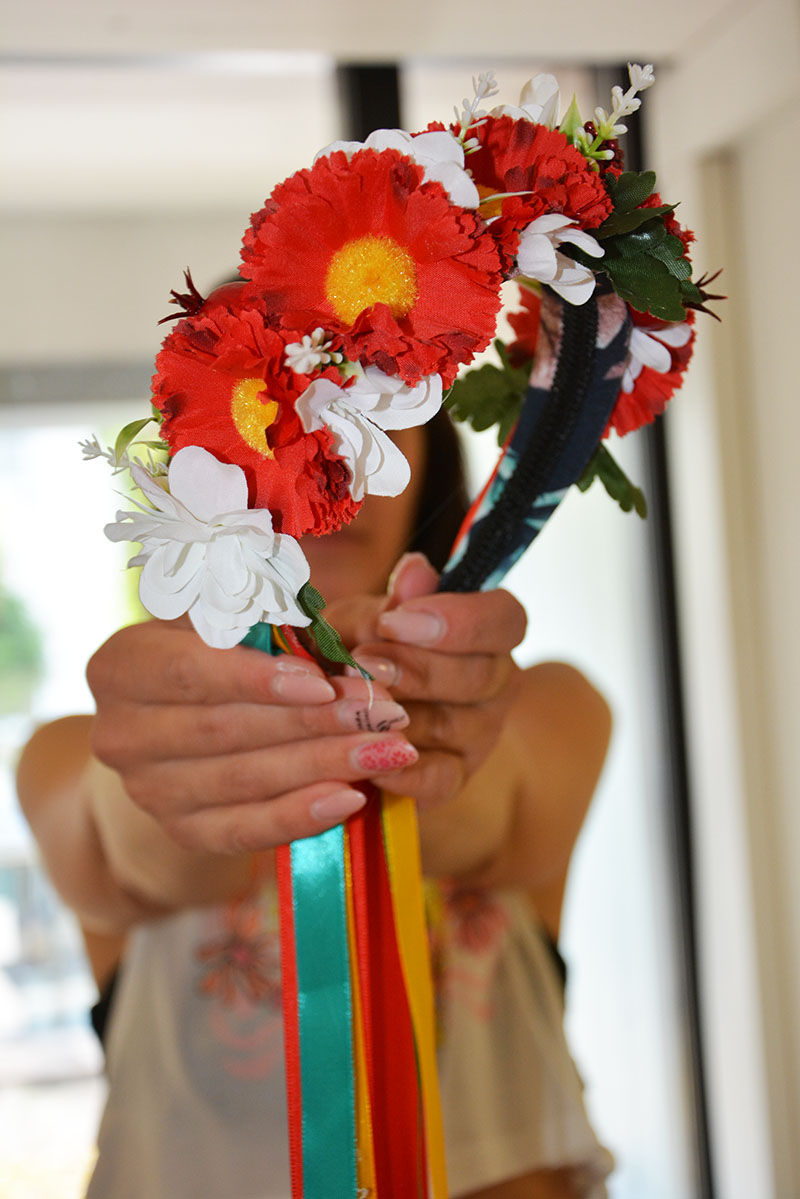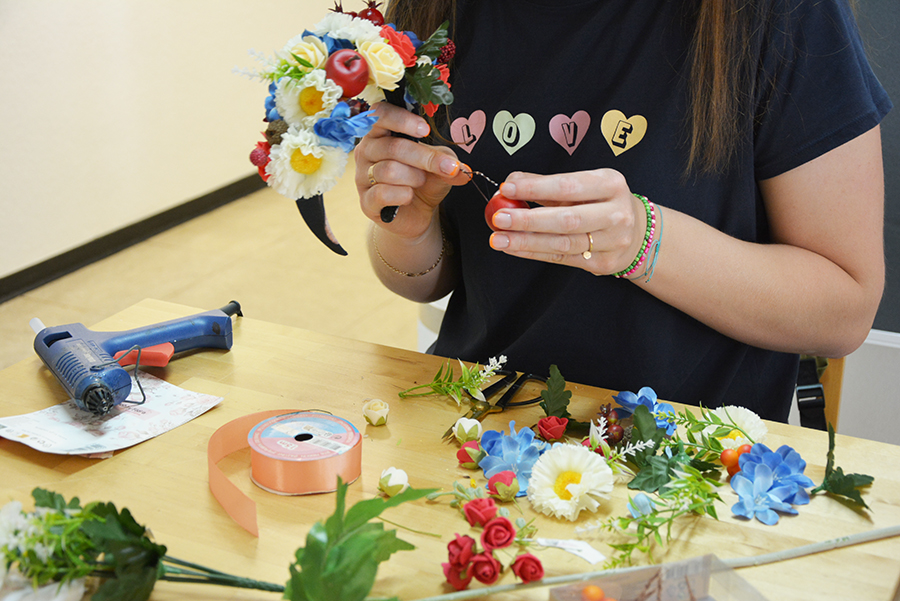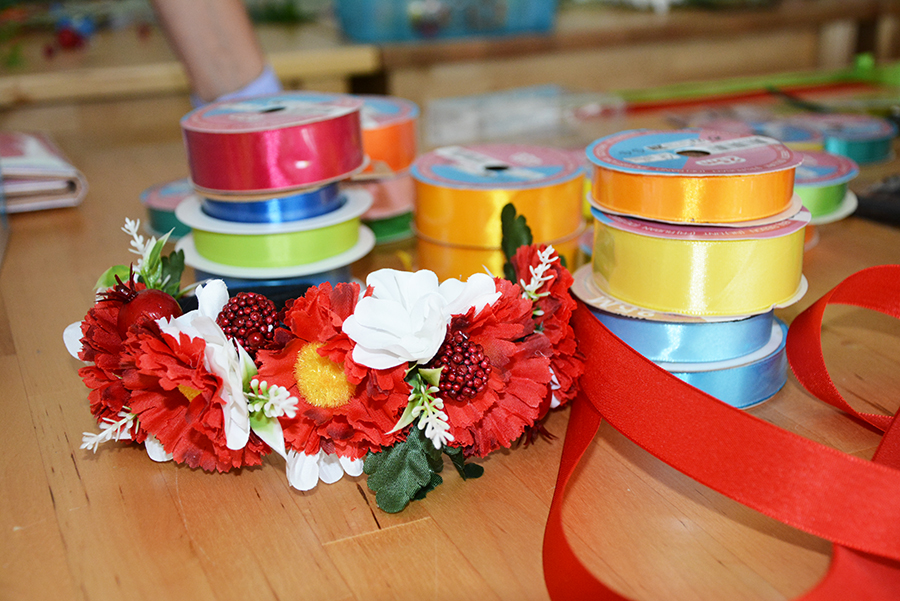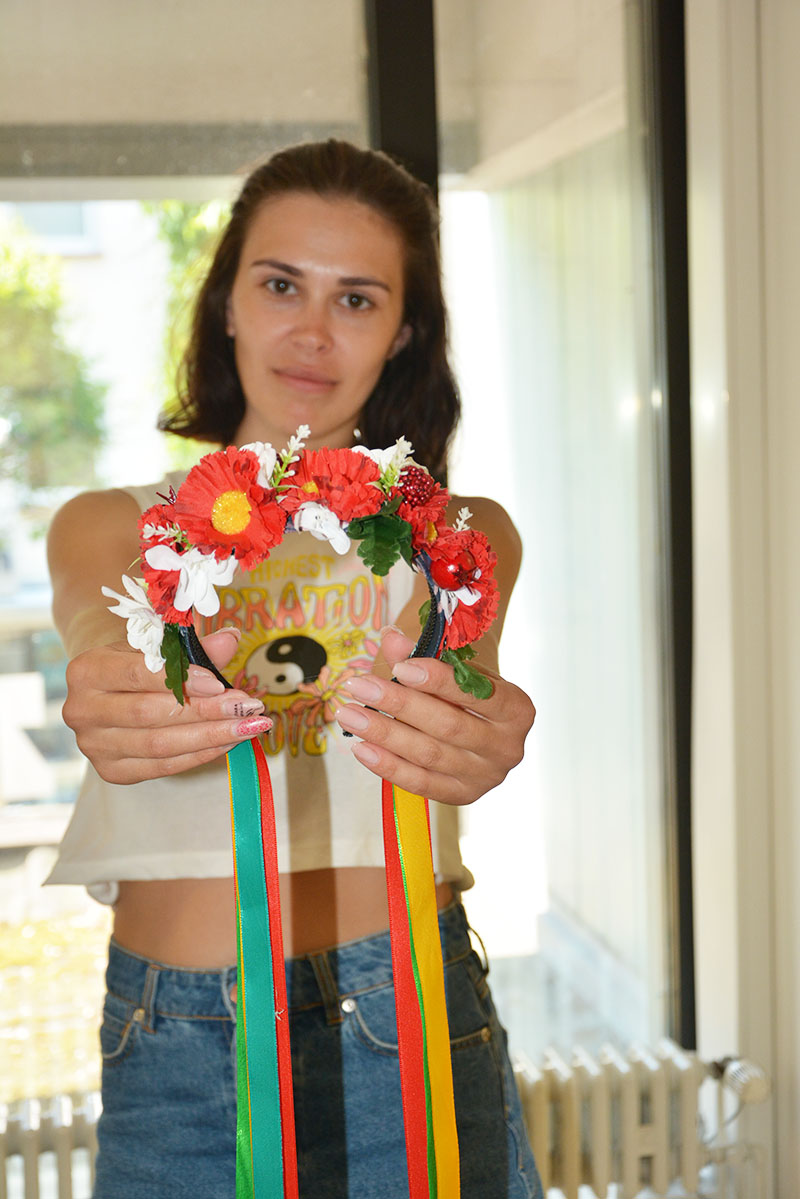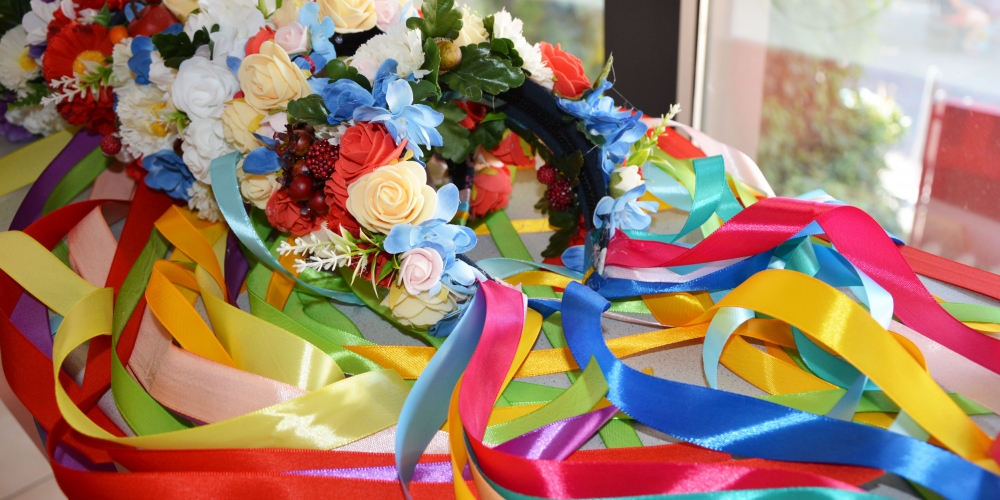©Fotos von Nataliia Leliavska
We held another event for Ukrainian refugees who experience homesickness for their homeland. We conducted a workshop on creating a Ukrainian wreath with the goal of preserving our culture and traditions, as well as fostering an atmosphere of mutual support and solidarity among the participants.
The Ukrainian wreath is not only a beautiful ornament but also a symbol of Ukraine's rich history and culture. It holds deep traditions and symbolic meanings that embody the feelings and memories of the Ukrainian people.
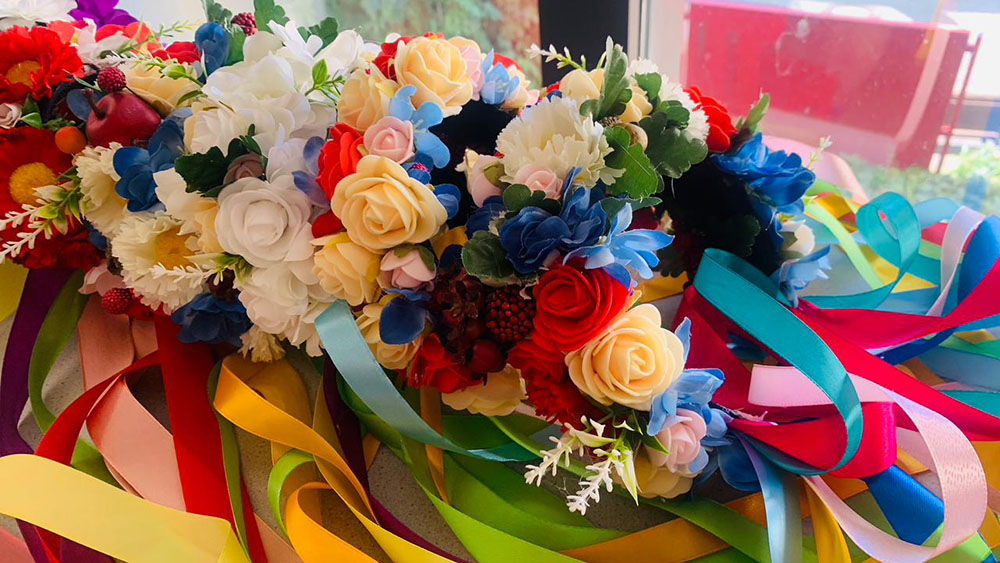
The Ukrainian wreath is a traditional decoration that has adorned the heads of Ukrainian women for centuries. Its history dates back to ancient times, and its crafting techniques have been passed down from generation to generation. In Ukrainian culture, the wreath has deep historical roots and is considered a symbol of joy, happiness, and prosperity.
In the past, Ukrainian wreaths were worn during weddings and festive ceremonies. They were also used as amulets to ward off evil spirits and protect homes from misfortune. Each element of the wreath carries its symbolic significance. For example, juniper branches and garlic bulbs were used to repel evil forces, while flowers symbolized beauty and freshness. Originally, Ukrainian wreaths were made from field flowers, herbs, and grains, symbolizing the wealth of the land and harvest. Later, wreaths started to be adorned with ribbons, beads, feathers, and other decorative elements.
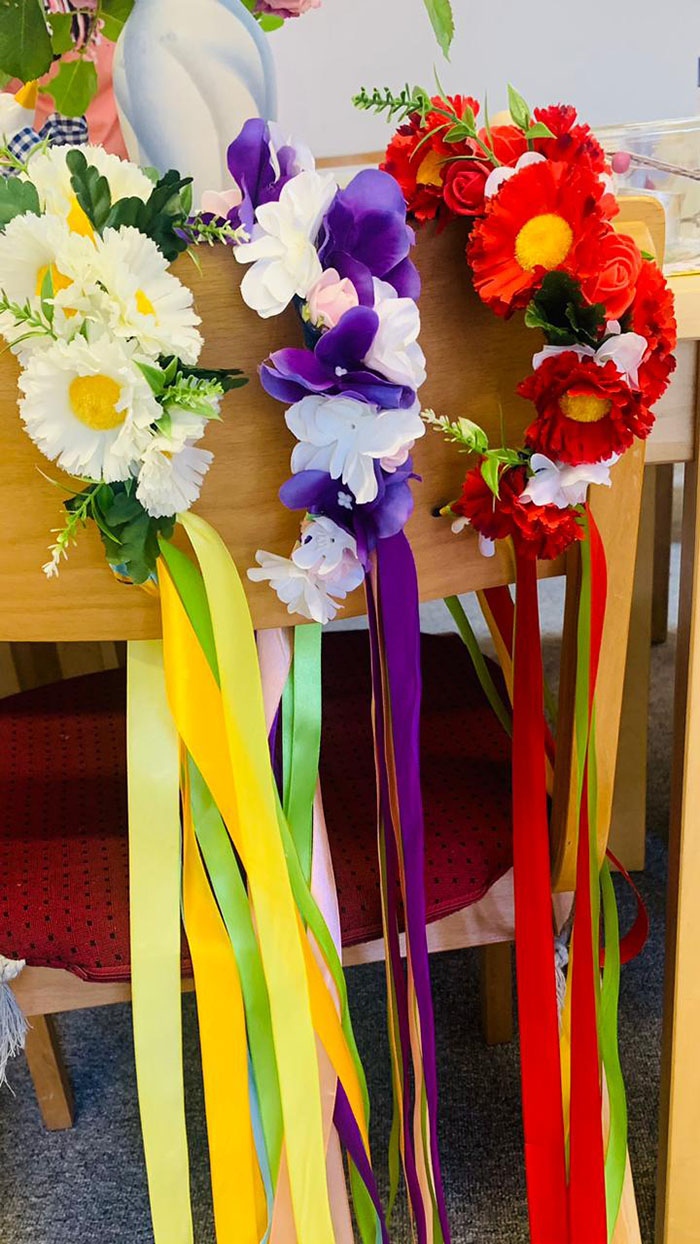
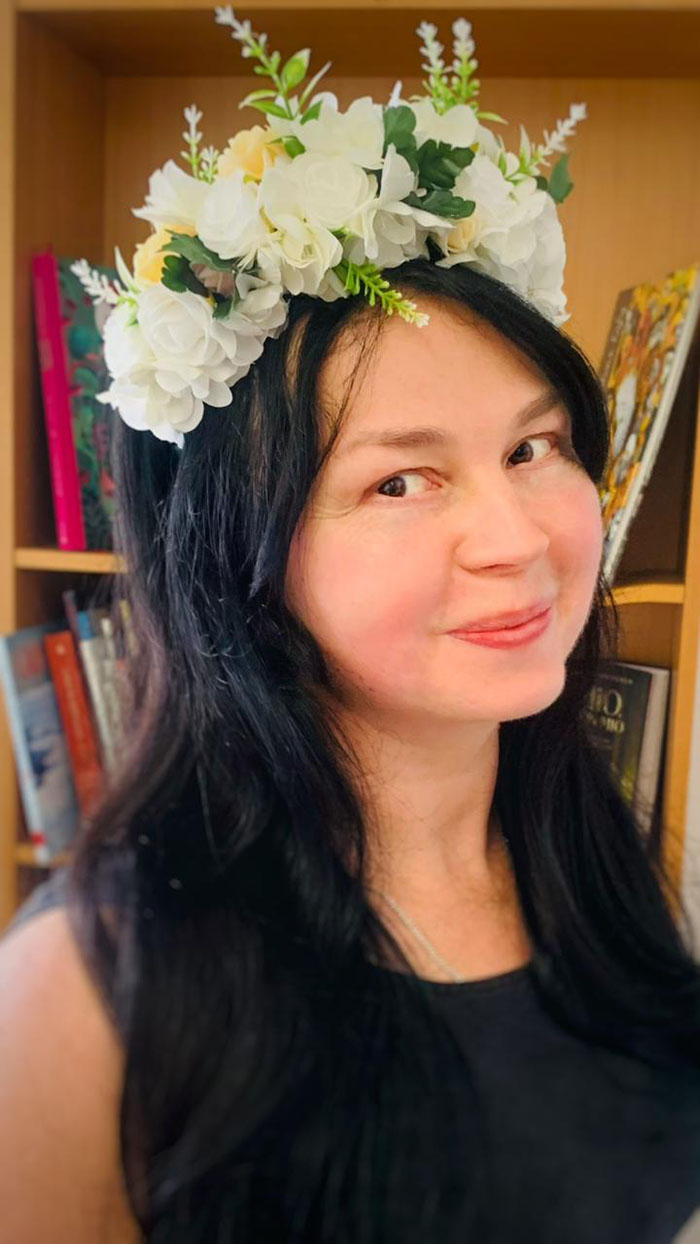
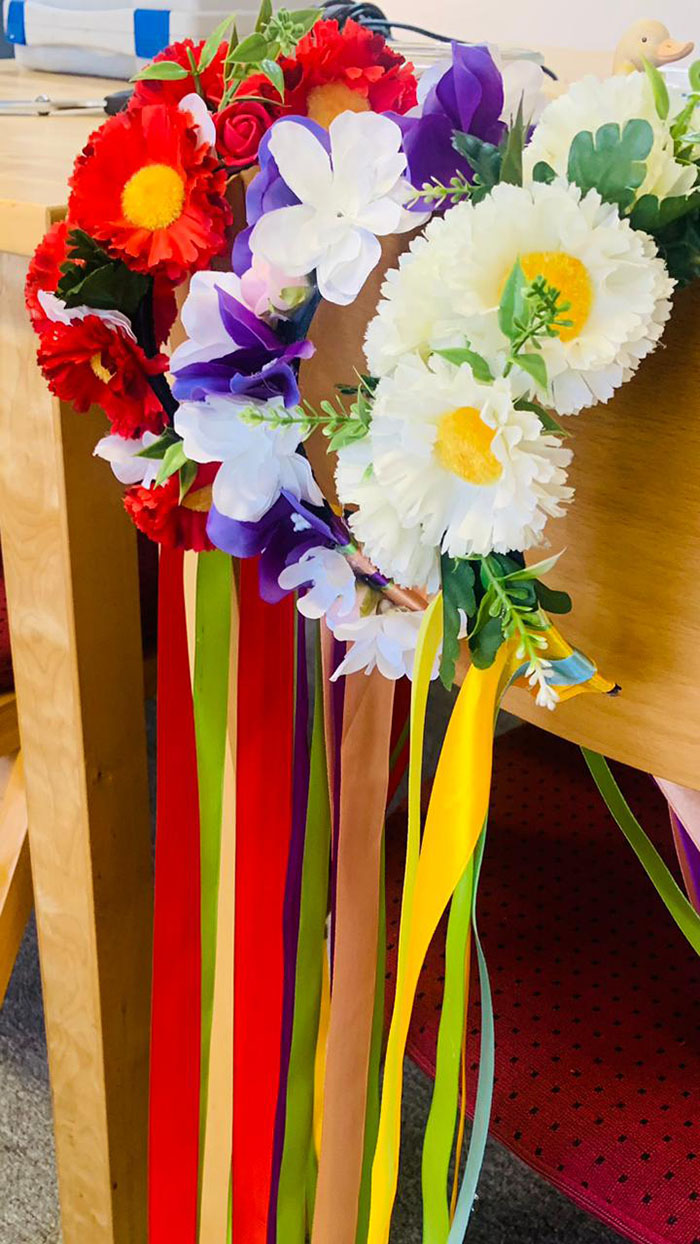
Each participant of the workshop had the opportunity to choose materials and elements that reflected their own identity and connection to their homeland.
Creating a Ukrainian wreath became a symbol of hope and renewal, as well as a reminder of the strength and endurance of the Ukrainian people. The workshop participants were able to create beautiful and unique wreaths that now adorn their homes, reminding them of their cultural heritage.
